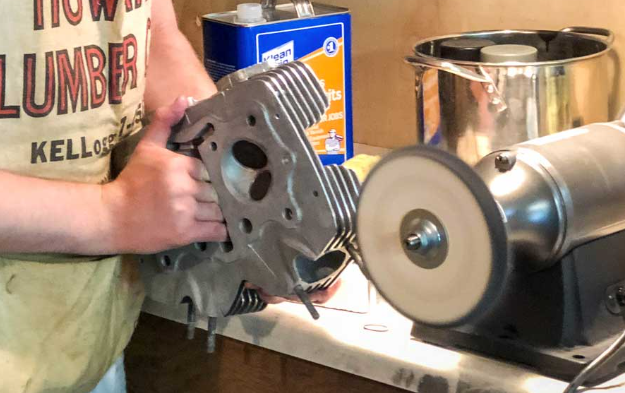Metal polishing agent is a chemical used for polishing the surface of metal objects. It is separated into paste and liquid. Typical varieties of paste include white polishing paste, green polishing paste, red polishing paste, paste polishing agent, etc. The liquid polishing agent may be made from fatty alcohol polyoxyethylene ether, sodium gluconate, disodium aminotriacetate, lauric acid diethanolamide, sodium nitrite, sodium tallow fatty acid, tetradecanol, etc. It’s important to note that polishing aluminum housing can be a time-consuming process that requires patience and attention to detail. It’s also important to wear protective gear, such as gloves and a mask, to avoid inhaling any dust or chemicals. Today, we’re showing you 6 ways of polishing aluminum housing.

Technique of polishing aluminum housing:
Mechanical polishing
The main method is to use polishing wheels coated with polishing wax to process the surface of the aluminum alloy housing, which can reduce the roughness of the surface of the aluminum alloy housing, make the surface smooth, obtain a bright or mirror effect, and effectively repair scratches and scratches on the surface of the aluminum alloy housing.
Electrolytic polishing
Electrolytic polishing employs chemical processes to use electrolytic polishing as the anode and insoluble metal as the cathode to immerse in the electrolytic tank. Direct current is utilized to dissolve the anodic aluminum oxide, which evaporates from the aluminum profile housing and restores its brilliance.
Chemical polishing
Chemical polishing may be used as a pretreatment procedure for protective and ornamental electroplating, as well as for chemical film creation such as phosphating and bluing. If a rust preventative passivation aqueous solution is dipped before painting, the aluminum oxide on the surface of the aluminum profile housing may be erased.
Ultrasonic polishing
Ultrasonic polishing is a technique of polishing brittle and hard materials by abrasive suspension employing ultrasonic vibration on the tool cross section. Use an abrasive suspension and an ultrasonic field on the workpiece. The abrasive is ground and polished onto the workpiece’s surface thanks to the oscillating action of the ultrasonic wave.
Polishing using a fluid medium
In order to accomplish the goal of polishing, fluid polishing technology uses the circulating liquid and the abrasive particles carried by the liquid to cleanse the surface of the workpiece. In hydrodynamic grinding, hydraulic pressure is used as a driving force, and the medium is often composed of specific compounds that have high flowability at low pressure and are blended with abrasive minerals. Silicon carbide powder may be used as the abrasive material.
Polishing using magnetic abrasives
Aluminum shells are polished using a variety of methods, including magnetic abrasive polishing. Under the influence of a magnetic field, magnetic abrasive forms an abrasive brush that is then used to grind the workpiece. The processing efficiency, quality, and manageability of this approach are all excellent. The surface roughness may be brought down to ra0.1 m with the use of appropriate abrasives.
While polishing, if there are markings that are too deep on the surface of the workpiece, someone will try to eliminate them by applying more pressure to the polishing process. A black charred appearance on the surface of the workpiece is a risk if this is done. As the surface is chemically polished, the effect becomes more pronounced, revealing a hazy, milky white mottling that persists even after the anodizing process. In addition to lowering the polishing wheel’s circumferential speed, other preventative actions include adding polishing paste on occasion, lowering the contact pressure between the workpiece and the wheel, and often switching the contact position of the wheel and the workpiece.

